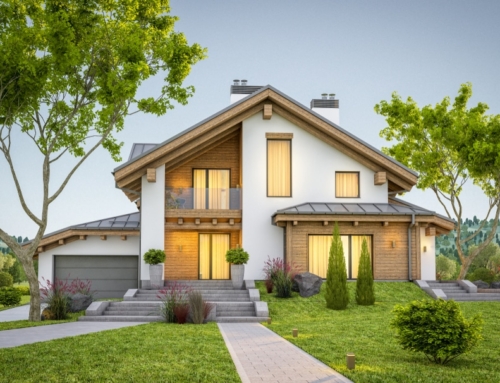Years ago, when my husband and I listed our condo for sale, one prospective buyer came to see it five different times.
Each time, we straightened up the books on the shelves, cleaned off the countertops, and washed the floors. We’d make sure the towels in the guest bath were hung evenly, do a quick wipe-down of the sinks and toilets, and made sure all of the dishes were either in the dishwasher, or put away in the cabinets. We’d basically clean the house from top to bottom for each showing.
In the end, the buyer who came through five times decided not to make an offer. He said it took him that long to figure out whether he wanted to buy the unit.
Although then I felt like the buyer was wasting our time, today I think about how much time he wasted deciding what unit to buy.
If you’re looking at property, every minute counts. If you’re in a hot market, any delay could mean you’ll lose an opportunity to make an offer for a property. If you’re in a slow market, you can take your time, but you won’t be doing yourself any favors if you come to see a property for the fifth time without an offer in hand.
Although you have every right to see a property as often as it takes to make you feel comfortable about purchasing it, most buyers can achieve this comfort level in two or three visits – if they know how to make the most out of a showing.
When you go to see a house, the idea is to take a step back and look at it as objectively as possible. Sure, you’ll want to react to the lovely artwork or perfectly awful carpet – but the idea is to react intellectually rather than emotionally.
Emotions tend to be the biggest problem for home buyers because they cloud the issue. It’s a lot hard to think objectively about whether the house has enough bedrooms and bathrooms if all you can do is worry about how much you’ll spend to repaint lime green or red walls.
The next time you go on a showing, try to imaging that the house, condo, or town house isn’t a home but a physical dwelling: Four walls, floor and a roof. Brokers say first-time buyers in particular often get caught up in the moment. There’s rush of attention thrust upon you, with brokers willing to do almost anything to get you to like them and their properties.
In fact, it’s more like sensory overload, especially if you’re seeing several properties at the same time. For some buyers, seeing through the decoration is the hardest part of buying the right home.
If you have an aversion to bright colors, prints, checks or plaids and you see a house with blue, yellow and orange walls, you may have trouble focusing on how beautiful the structure of the home is because you’re repulsed by the decoration. Your emotional reaction might be to turn and walk right out the door and miss a potentially terrific home simply because someone has different taste.
What should you be looking for? You should try to get different things out of each visit to the home.
For example, when you go to a first showing, you’re looking for a home that meets your basic needs: Is it within the right distance to work, church, family and friends? Does it have enough bedrooms and bathrooms? Is there enough storage space? Is there parking? Is it safe? Is it in the right school district?
If the home meets your basic requirements, you can then begin to look for other items that may be on your wish list, including extra bedrooms and bathrooms, a garden or deck, separate laundry room, possible expansion space, a fireplace and the condition of the house, its appliances roof, foundation, walls, and mechanical systems.
A good first showing should take anywhere from 20 to 30 minutes on a decent size home. On a second showing, you’ll want to take your time so that you can confirm that the property is really the way you remembered it.
You should look at room sizes to be sure your furniture will fit (bring a tape measure). Look at the way the house faces. Will there be plenty of natural light or will the house and garden be dark? Do all the appliances work? Will you have to replace them or redo a kitchen or bathroom in the next five years? Does each room have a closet? Is there a place for long-term storage?
More importantly, try to pick out any big problems with the property. Does it back onto any sort of commercial property? Is it too close to a school or major road? Is it noisy or quiet? Is there a gas station or dry cleaners nearby that could pose an environmental problem?
Second showings might last as long as an hour or so. You should sit in various rooms and try to imagine how your furniture might look. Bring the measurements of any special or large piece of furniture so you can decide on the spot if it will fit or not.
If you’re been thoughtful about how you’ve approached your purchase, you should have enough information after the second showing to decide whether or not you’ll want to make a purchase.
Now, you need to do the rest of your “homework:†Pay a quick visit to any other property you’re considering, plus spend time with your agent going over any other homes that have just come onto the market. Talk with your agent about the price the seller is asking and start to compare the property with other homes that are currently for sale. Try to get a sense from the seller’s agent about what it will take to purchase the property. Then, you can start to calculate how much you might want to offer and decide if the property is worth that price.
By the time you go back for your third showing, you should have enough information to write up an offer for purchase.
Jan. 14, 2005.






Leave A Comment